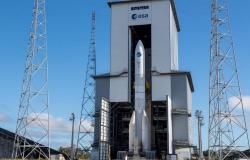It is the first discovered in this region for more than 50 years and only the 4th in this country where new fossil sites have been excavated.
Musankwa sanyatiensis lived 210 million years ago, in the Upper Jurassic, on the shores of Spurwing Island, located in Lake Kariba, in northern Zimbabwe. It becomes the fourth dinosaur discovered in the country, after the descriptions of Syntarsus rhodesiensis in 1969, Vulcanodon karibaensis in 1972 and, more recently, Mbiresaurus raathi in 2022.
A partial fossil
The remains, discovered by an international team led by Professor Paul Barrett of the Natural History Museum in London, correspond to a single hind leg, with the bones of the thigh, tibia and ankle. “Despite the limited number of fossils, these bones have unique characteristics that distinguish them from those of other dinosaurs living at the same time.“, explains, in a press release, Kimberley ‘Kimi’ Chapelle, of Stony Brook University, in New York.
According to the paleontologists, who publish their results in the journal Acta Palaeontologica Polonica, the animal belongs to the group of Sauropodomorphs, long-necked bipedal dinosaurs. They were very widespread at the end of the Triassic, and their group is located at the root of the sauropod group, which is home to the largest dinosaurs that lived such as the enormous titanosaurs or brachiosaurs.
The latter did not reach particularly imposing dimensions: its weight is estimated at around 390 kilos but its size is difficult to determine due to the small number of bones. It is still one of the largest dinosaurs known from this era.
The fossil leg bone that was found. Credits: Paul Barrett.
Africa, a land of dinosaurs to explore
The history of African dinosaurs is almost as old as the term, coined by Sir Richard Owen in 1842. The continent’s first dinosaur was, in fact, discovered in South Africa in 1845. Since then, many other fossils have been discovered. extirpated from African soil but in only around ten countries, most of them located in[…]
Read more on sciencesetavenir.fr







